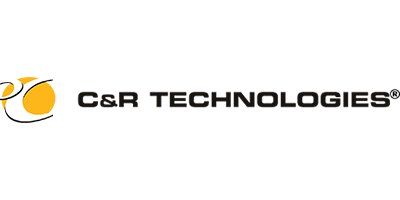

- Home
- Companies
- C&R Technologies, Inc. (`CRTech`)
- Software
- Version SINDA/FLUINT - Heat Transfer ...
Model SINDA/FLUINT - Heat Transfer and Fluid Modeling Software
SINDA/FLUINT is a comprehensive finite-difference, lumped parameter (circuit or network analogy) tool for heat transfer design and fluid flow analysis of complex systems. It is used at over 700 sites in 40 countries in the aerospace, electronics, petrochemical, power generation, medical, and automotive industries.
- Thermal radiation, conduction, convection heat transfer
- From component design to full system performance simulation
- Steady state and transient heat transfer and fluid flow
- Submodels for improved organization, ease of model merge
- Time, temperature, and pressure-varying thermal and fluid properties
- Optional concurrently executed user logic and simulations
- User-determined solution techniques, solution sequences, accuracy levels, and outputs
- Example: iterative vs. sparse matrix inversion
- Methods, controls, etc. can vary submodel by submodel
- Convenient restarts and parametric analysis options
- Compatible with the EZXY® Plotting Utility
- Self-resolving spreadsheet-like expressions and user variables (registers)
- Facilitates model maintenance: centralized changes
- Makes what-if, parametrics, and sensitivity studies trivially easy
- Lets inputs be defined on the basis of outputs, problem time, etc.
- Eliminates the most common uses of user logic
- Extensive library of user-invoked routines (thermostatic heaters, phase change materials, math utilities, etc.)
- Multiple fluid flow networks with coupled heat transfer solutions
- Graphical User Interfaces available, Thermal Desktop® and FloCAD®
- User called routines for modeling common devices and phenomena
- Heat pipes, constant and variable conductance
- Thermoelectric cooling devices
- Ice or frost accretion/melting simulation
Comprehensive Fluid Flow Analysis
- User-definable fluid properties
- Thermodynamically compressible and incompressible fluids
- Fluids with molecular weight that varies as a function of pressure and temperature
- General pump, valve, duct models
- Single and two-phase flow
- Boiling and condensation
- Homogeneous or slip flow
- Built-in regime mapping
- Flat-front modeling for priming and purging
- Pure fluid substances, or mixtures of gases, liquids, or both
- Condensable/volatile mixtures (psychrometrics, etc.)
- Dissolution/evolution of noncondensible gases
- Equilibrium or finite rate chemical reactions
- Nonequilibrium two-phase volumes
- Turbomachinery: turbines, variable and postitive displacement compressors
- Choking detection and modeling
- Waterhammer and acoustics
- Time- and direction-varying body forces; natural convection
- Simplifying assumptions and exploitation of symmetry
- Wicks and other capillary devices
- Subdivision of control volumes (e.g., stratification)
- Geometry associated with complex compartments and ports
- Kinetic energy transport included for high speed flow phenomena
- Includes spatial accelerations for duct modeling
- Wye/Tee simulations routines for manifold modeling
- Simplified and detailed heat exchanger modeling
Advanced Design Module
- High-level decision support - Advanced Design
- Goal seeking: find design inputs as a function of the desired model response
- Optimization of multiple design variables using arbitrarily complicated constraints
- Automated model correlation to test data
- Reliability engineering to quantify the design reliability
- Synthesize a design that meets reliability requirements up front, intelligently balancing cost against risk
For decades, SINDA/FLUINT has provided users with proven and powerful heat transfer and fluids analysis capabilities that continue to expand each year. SINDA/FLUINT is a comprehensive, generalized tool for simulating complex thermal/fluid systems such as those found in the electronics, automotive, petrochemical, power generation, medical, and aerospace industries. SINDA/FLUINT saves time and money by making the design process faster and easier, letting you gain a better understanding of your complex system. You control what is important and how to get the answer to your design performance questions using the most efficient approach. Furthermore, the application is completely extensible making it perhaps the most versatile thermal and fluids software product on the market. You choose the features you want, decide what levels of accuracy and approximation are appropriate, and what outputs are needed. You can even add your own customizations as needed to handle your unique design task, to automate repetitive tasks, or to create user-defined modeling components and correlation libraries.
As you can see in the above diagram, SINDA/FLUINT is the solution engine behind Thermal Desktop® and its various modules. Alternatively, SINDA/FLUINT can be used in a text-based mode applying the COM-based API interface with Mathworks` MATLAB® or other COM-aware applications. More often, however, those APIs are used to communicate with Thermal Desktop directly.
Please see the following pages for more in depth topic information
- Two-Phase Flow Capabilities
- Introduction to the Advanced Design Module
